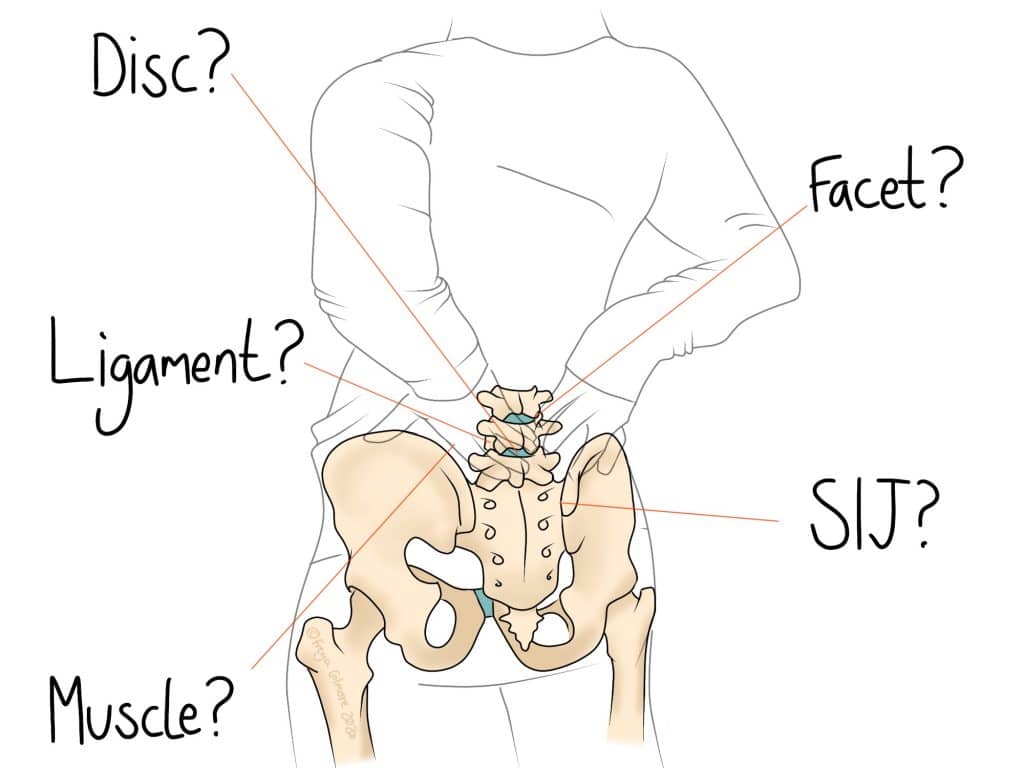

Roughly 80% of us experience low back pain at least once in our lives, but the vast majority of cases are not serious. Even cases that lead to time off work are not necessarily indicative that something is damaged.
Osteopaths can help with lower back pain formally categorised as “non-specific”. This is an umbrella term that includes pain caused by:
“Non-specific” does not mean that we don’t know what is causing your pain or that we can’t do anything about it. It just means that more serious causes such as fractures or disease can be ruled out.

These non-serious causes rarely correspond to findings on MRI or X-Ray. Making an appointment with your osteopath before getting a scan could mean being symptom free before your hospital appointment date.
In fact, evidence shows that MRIs show problems with discs in people without symptoms, so scans are far from the gold standard for diagnosing back pain. This is one reason that imaging is no longer recommended as a GP’s first strategy for straight-forward back pain. You also don’t need a doctor’s referral to see an osteopath, you can make an appointment yourself.
Due to comprehensive training, osteopaths are able to distinguish between non-specific lower back pain and more serious causes. If your back pain does require medical attention, we can support you in getting to the right practitioner.
Some lifestyle factors have been shown to predispose an individual to developing lower back pain. These include:
So staying active without pushing too hard, and staying at a healthy weight will help to prevent future episodes.
Problems with the lower back are often linked to dysfunction elsewhere, such as stiffness in the upper back. Upper back restriction is something we commonly see in clinic, often exacerbated by long periods of sitting still such as when stuck at a desk. When the upper back is restricted, the body compensates by putting more movement through the other areas of the back. This can cause the muscle tension and strains mentioned above.
During an appointment, your osteopath will look at the whole body. This means we can identify these areas of restriction before they cause symptoms. Exercises and advice to keep these stiff areas at bay are also great ways to prevent episodes of pain.
Osteopaths use a range of techniques for pain relief and rehabilitation. Hands-on techniques such as massaging and stretching muscles, or moving and clicking joints can be useful. Avin is also qualified in Medical Acupuncture, which has been proven to improve low back pain.
Because osteopaths look at the whole individual, we are in a position to find any factors that might have fed into the symptoms you have today.
Back pain can be debilitating and scary, so an important part of your treatment plan is rehabilitation. Exercises help keep your back happy between treatments, but they also serve the purpose of letting your body know that it is safe to move. The sooner we can get you comfortable again, the sooner you can get back to normal.
If you suffer from these symptoms, you can make an appointment at any of our 6 clinics.